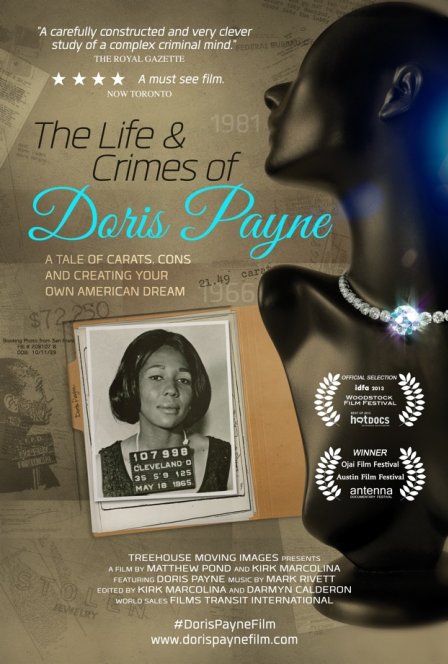Doris Payne is 83 years old. She is a black woman. She grew up poor in West Virginia. Her father beat her mother. She’s been stealing jewels since the 50s.
In 60 years, she’s stolen $2 million worth of jewelry, which is a paltry sum. (It works out to just over twice the annual income of someone working for minimum wage, $7.25 per hour.) …Unless the filmmaker didn’t adjust for inflation, which would have been a stupid mistake.
At 74 minutes, The Life and Times of Doris Payne feels like a made-for-TV special that hasn’t yet been cut down to accommodate commercial breaks. If I were visiting my parents and it were a Wednesday night and we were watching TV after dinner and this film were on, I’d probably watch two-thirds of it before switching to HGTV.
The life (and, yes, crimes) of Doris Payne want to be portrayed on screen, but this film doesn’t satisfy. It feels a bit like a promotion aimed at priming the market for the reception of an as-yet-unannounced thriller-slash-biopic (starring Halle Berry, purportedly). As if to drive this point home, the mall jewelry store owner who invites Payne in for a chat is named Alfred Molina.
The film tries to develop a complex view of Payne’s motivations and justifications. She stole and fenced her first diamond to help her mother escape an abusive marriage. She made a career out of stealing jewels because it enabled her to play at being rich and not-black. (When she enters a store and plays the role of a customer, Payne says, “People don’t see me as black, as an African-American woman.”) She still steals jewels as an octogenarian because she never resolved the trauma at the root of her kleptomania.
When one of the directors of the film corners Payne about a lie she told the police that implicated him, she becomes angry, defensive, not at all charming in the way the film assures us she is when she’s at work in a jewelry store.
Why do we need to take these variously constructed views of Payne?
Her dear friend says (brilliantly): “Doris is no saint. Her horns are holding her halo up.”
The salesperson who testifies against Payne in court calls her a psychopath.
Payne isn’t a saint or a devil or a psychopath. Her crimes are victimless (tearful testimony to the contrary notwithstanding). The consequences of her crimes are inconsequential, even. De Beers continues to exploit Africans. New York City continues to exploit all of us.
Mass culture is largely a culture of wealth. Payne is a product of that culture and a threat to it, however small a threat. She learned that luxury empowers, so she grasped at luxury. She’s been taking what the culture won’t give her. That, of course, is illegal.
(Few illegal activities are as destructive as a court of law.)
Payne’s attorney, Gretchen von Helms, totally flubs. She seems like a lousy lawyer and a… well, a lawyer.
Payne went to jail, then, in 2011. She’s in jail again now.
Booker T. Washington wrote in The Future of the American Negro (1899), “The study of art that does not result in making the strong less willing to oppress the weak means little.”
The study of life that does not result in making the strong less willing to oppress the weak also means little.

